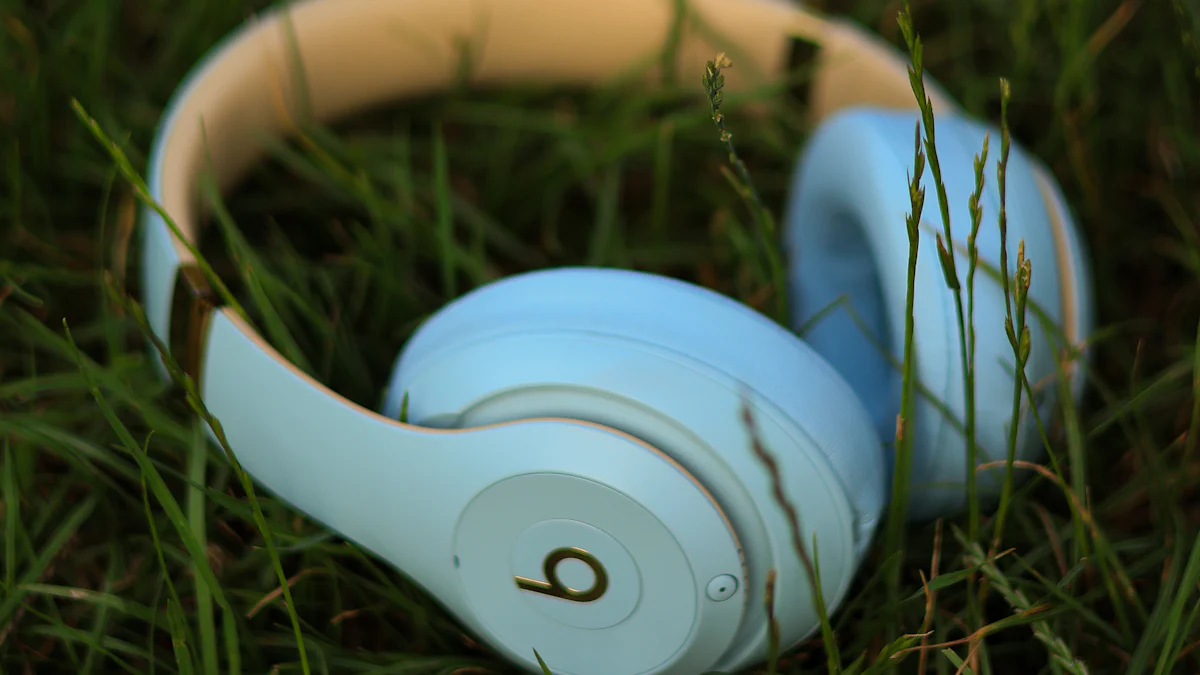Can Noise-Canceling Headphones Harm Nature?

Noise-canceling headphones have gained immense popularity for reducing unwanted sounds in daily life. The global market for these devices is projected to reach a staggering USD 41.6 billion by 2031. This blog delves into the potential environmental impacts of such technology. Understanding how these devices might affect nature is crucial. The exploration will provide insights into the balance between technological advancement and environmental preservation.
Environmental Impact of Noise-Canceling Headphones

Noise Reduction and Its Effects
Impact on Natural Soundscapes
Noise-canceling headphones have transformed how people experience sound. These devices create a quiet environment by reducing loud noises. This technology impacts natural soundscapes significantly. The reduction in ambient noise can alter the perception of natural environments. People may miss out on important natural sounds like bird calls or rustling leaves. These sounds play a crucial role in connecting individuals to nature.
The absence of these sounds can lead to a disconnect from the environment. A study found that the use of noise-canceling technology decreases sound pressure levels, which suggests potential benefits for hearing protection. However, this reduction also means less exposure to natural soundscapes.
Influence on Human Perception
The influence of noise-canceling headphones extends beyond just the auditory experience. The ability to block out unwanted noise affects human perception. Individuals become less aware of their surroundings when immersed in a bubble of silence. This lack of awareness can impact safety, especially in urban settings where alertness is crucial.
Moreover, continuous use might affect mental workload and cognitive functions over time. Research indicates that noise-canceling technology influences mental workload, providing a foundation for further investigations into its effects on cognition.
Energy Consumption and Waste
Production and Disposal Concerns
The production and disposal of noise-canceling headphones raise environmental concerns. Manufacturing these devices requires significant energy consumption, contributing to carbon emissions. Additionally, improper disposal leads to electronic waste accumulation.
Consumers often replace headphones frequently due to technological advancements or wear and tear. This cycle increases electronic waste generation, posing challenges for waste management systems.
Sustainable Practices
Adopting sustainable practices becomes essential in mitigating environmental impacts. Manufacturers can focus on eco-friendly materials and energy-efficient production processes. Recycling programs encourage consumers to dispose of old devices responsibly.
Educating users about sustainable choices promotes environmentally conscious behavior when purchasing new products or disposing of old ones.
Human and Wildlife Interaction

Effects on Wildlife
Disruption of Animal Communication
Noise-canceling headphones have gained popularity among People seeking relief from loud environments. However, the impact on wildlife communication cannot be ignored. Animals rely heavily on natural sound for communication. The reduction in ambient Noise caused by these devices can disrupt this essential process. For instance, birds use calls to attract mates or warn of predators. A diminished ability to hear these calls may lead to confusion and increased vulnerability.
The absence of natural sound can also affect migratory patterns and feeding habits. Animals depend on environmental cues for survival. The interference from human-made Noise, including that reduced by noise-canceling technology, poses a threat to their well-being.
Habitat Changes
Changes in habitat due to altered soundscapes present another challenge for wildlife. The introduction of artificial silence affects animal behavior and habitat use. Some species may avoid areas with reduced natural sounds, leading to shifts in population dynamics.
The presence of humans using noise-canceling headphones can create an unnatural environment for animals. This alteration impacts the delicate balance within ecosystems, potentially leading to unforeseen consequences.
Human Behavior and Nature
Reduced Awareness
The widespread use of noise-canceling headphones influences human awareness of surroundings. Immersion in a silent bubble reduces alertness, especially in urban settings where vigilance is crucial for safety.
A study highlighted significant differentiation in brain activity with noise-canceling technology, suggesting a potential reduction in mental load. This finding emphasizes the importance of maintaining awareness while using such devices.
Potential Benefits
Despite challenges, benefits exist for individuals using noise-canceling headphones responsibly. These devices provide relief from chronic exposure to toxic Noise, which can elevate stress hormones and decrease immunity.
For some individuals like an Empath, who are more sensitive to external stimuli, these headphones offer a reprieve from overwhelming sensory input. By reducing distractions, users experience enhanced focus and productivity.
Perspectives from Experts
Insights from Judith Orloff
Judith Orloff, a renowned psychiatrist, offers valuable insights into the psychological impacts of noise-canceling headphones. Her expertise in psychiatry and empathy provides a unique perspective on how these devices influence mental health. Orloff emphasizes that while noise-canceling headphones can create a serene environment by reducing Noise, they may inadvertently affect emotional well-being.
"Through her bestselling books and her work training new psychiatrists, Dr. Judith Orloff is helping to change the narrative around empathy."
The constant use of these devices might lead to an over-reliance on artificial silence. This reliance could cause individuals to become less tolerant of natural Noise levels. The absence of ambient sounds might also reduce opportunities for emotional resilience development.
Psychological Impacts
The psychological effects of prolonged exposure to reduced Noise environments are significant. Users often experience decreased stress levels due to the elimination of unwanted sounds. However, this reduction in external stimuli might lead to increased sensitivity when exposed to unexpected or sudden loud Noises.
Dr. Orloff's research suggests that continuous use of noise-canceling headphones can alter brain activity patterns. These changes may impact cognitive functions such as attention and memory retention. Individuals using these devices frequently should be aware of potential shifts in mental processing.
Noise-canceling headphones present both advantages and challenges. These devices offer a refuge from unwanted Noise, enhancing focus and productivity. However, the environmental impact of noise-canceling headphones demands careful consideration. Production processes contribute to electronic waste, affecting natural ecosystems.
Users must balance technology use with environmental awareness. Excessive reliance on these devices can decrease awareness of natural Noise and affect brain processing. Future developments in sustainable materials for noise-canceling headphones could reduce harm to nature. Choosing eco-friendly options will benefit the environment by minimizing adverse effects associated with Noise reduction technologies.
See Also
Comparison of Lulunami and Sherpatera's Latest HD Cameras
Exploring Inner Peace Through Audio Calmness
Which Video Conferencing Camera Reigns Supreme: Jabra PanaCast 50 or Coolpo AI Huddle PANA?
